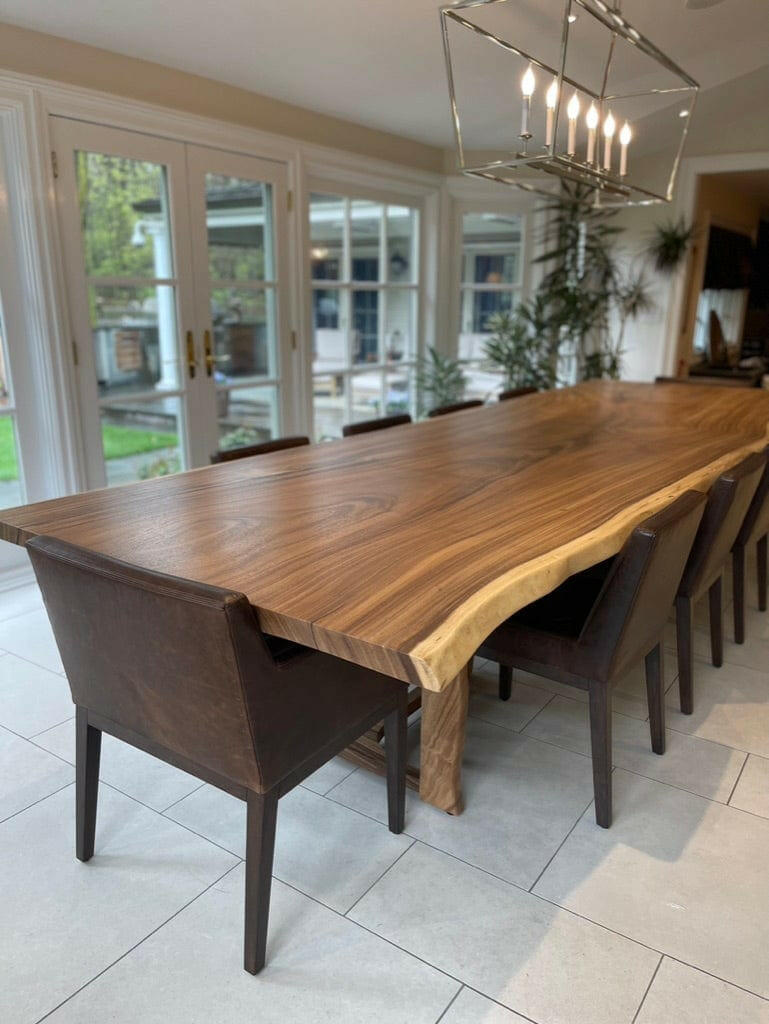How to Pick the Perfect Dining Room Table Legs for Your Home Design
How to Pick the Perfect Dining Room Table Legs for Your Home Design
Blog Article
A Comprehensive Check Out Dining Table Leg Styles: Discovering the Suitable Match
Picking the appropriate dining table leg style is crucial for both visual appeal and practical capability. For those with larger tables, trestle legs ensure durable support, whereas hairpin legs introduce a mid-century modern ambiance with their minimalist style. The x-shaped legs blend contemporary design with improved security.
Typical 4 Legs
Amongst the various kinds of table leg styles, the typical four-leg design stays an ageless selection for numerous houses. This traditional configuration provides an unified mix of capability and aesthetics, making it a seasonal favorite. Four legs supply balanced support, guaranteeing the table stays secure and efficient in birthing significant weight. This is especially beneficial for families that frequently host huge events or utilize their dining table for numerous functions, such as work or crafting.
From an aesthetic point of view, the traditional four-leg design can be conveniently adjusted to different interior styles. Whether crafted from timber, steel, or a combination of materials, these legs can be intricately carved, smooth and minimalistic, or anything in between. Their versatility allows them to complement both rustic and modern settings flawlessly.
Furthermore, the straightforward framework of the four-leg design assists in ease of motion and positioning within a space. Unlike more complicated bases, this design lessens obstructions, giving enough legroom for restaurants. In summary, the traditional four-leg eating table leg design marries enduring style with useful functionality, making it an astute choice for those looking for both form and function in their dining furnishings.
Stand Base
Usually celebrated for its classy and space-efficient design, the pedestal base is a recognized alternative to the standard four-leg configuration in dining table leg designs. Without corner legs, restaurants are paid for higher freedom of movement, making it a perfect choice for round and oblong tables that advertise even more intimate and comprehensive celebrations.
Furthermore, the pedestal base's central support can take care of significant weight, enabling the usage of much heavier tabletops, such as marble or thick hardwood. This toughness combined with its visual adaptability makes the pedestal base a popular selection in both conventional and contemporary interior settings. It can seamlessly incorporate with different style motifs, from traditional elegance to minimal modernity. Additionally, the central column itself provides a canvas for complex designs and creative expressions, adding an element of aesthetic interest underneath the table. In summary, the stand base integrates capability snappy, making it an improved and sensible alternative for diverse dining atmospheres.
Trestle Legs
Trestle legs offer a robust and classic structure for dining tables, defined by their horizontal cross-bracing and durable support beam of lights. Stemming from medieval times, this layout has actually evolved yet kept its necessary framework, making it a perennial fave in both conventional and modern settings. The main trestle beam, usually supported by 2 or more upright blog posts, provides remarkable stability, allowing for larger table lengths without the need for extra legs.
A significant benefit of trestle leg tables is the ample legroom they use. Unlike tables with four edge legs, the absence of obstructions at the table's sides provides unblocked area for chairs and restaurants, enhancing comfort and access. This makes trestle tables optimal for fitting larger gatherings, whether in a dining space or a reception hall.
From rustic farmhouse to sleek modern styles, trestle legs can be customized to suit specific preferences. Their long-lasting charm and practical benefits make trestle legs an engaging option for those looking for both style and practicality in their eating table.
Hairpin Legs

The charm of barrette legs exists in their simpleness and adaptability - dining room table legs. Available in a range of materials, including steel and brass, they can be completed in countless shades to match various indoor designs. Whether matched with a rustic wood table top or a modern glass surface, barrette legs easily mix functionality with a touch of vintage beauty
Longevity is one more notable function of hairpin legs. In spite of their delicate look, these legs are engineered to bear substantial weight, ensuring the table remains steady and secure. In addition, they are fairly easy to Full Article mount, making them a prominent selection for DIY fanatics and specialist furniture manufacturers alike.
X-Shaped Legs

Built from materials such as steel, timber, or a mix of both, X-shaped legs can be tailored to match different style choices. Steel legs usually offer a streamlined and commercial feeling, suitable for loft-style houses and contemporary eating areas. On the other hand, wood X-shaped legs use a warmer, much more rustic charm, appropriate for farmhouse or eclectic insides. The convenience in materials enables home owners to customize their dining tables to much better fit their total layout plan.
Furthermore, the engineering behind X-shaped legs makes certain even weight distribution, lessening the danger of click to read more wobbling and improving sturdiness. This makes them especially fit for larger dining tables that call for extra support. Essentially, X-shaped legs mix useful engineering with contemporary appearances, making them an ageless option for diverse dining environments.
Conclusion
A thorough understanding of table leg styles discloses the distinctive characteristics and advantages of each style. Standard 4 legs offer security and timeless appeal, while stand bases give legroom and a streamlined look. Trestle legs make certain durable support for larger tables, and barrette legs present a mid-century modern aesthetic. X-shaped legs incorporate contemporary design with boosted stability. Picking the ideal leg style makes sure both useful and aesthetic satisfaction in any dining area.
Report this page